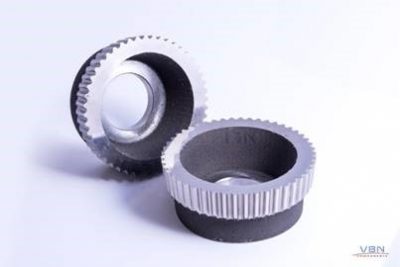VBN Components Vibenite 290 Launched as Wear and Heat-Resistant Steel

VBN Components is launching the world's hardest near-net-shape steel, Vibenite 290. The hardness of the alloy, plus its high carbide content, make it a realistic alternative to cemented carbides for numerous applications that demand high resistance to both wear and heat. The additive technology of Vibenite 290 enables complex and smart shapes.
"We interact daily with customers who have very specific requirements regarding materials performance concerning wear and heat resistance. To meet their needs, we have developed a material with excellent qualities, and which can be ordered in near-net-shape," Martin Nilsson, CEO of VBN Components, said.
Vibenite 290 alloy is highly wear and heat-resistant and contains a high proportion of carbides; around 25 volume percent in fully-hardened condition. This high carbide content makes the material a strong candidate for replacing cemented carbides in many situations, especially for larger details with complex designs. Furthermore, the alloy's unique properties make it suitable for any type of application where erosion and abrasion are present, especially when adapted to metal cutting tools, for example.
Typical users come up against numerous obstacles to finding the ideal material for their tools and components. They traditionally face the need to first forge and roll metal bars that, following heavy logistics, are finally drilled, milled and turned. With additive technology, VBN makes this whole process obsolete. The result is higher efficiency for the user and, thanks to the material's greater wear resistance, substantially increased product efficiency and life-span.
"The limitations of traditionally-made products result in a compromise. Instead of choosing the material best-suited to the product in mind, producers are instead forced to use a material that they can process. By focusing on material performance, we turn this completely around," Ulrik Beste, CTO of VBN, said.
VBN Components has been producing extremely hard and wear-resistant steel products using this technique for many years. Step-by-step, the company has moved towards what is today the world's hardest steel - a milestone in materials development. The need for less material in both end-use and manufacturing is one of the reasons why environmental impact is reduced by 90 percent compared to traditional industry (according to tests at one large Swedish company).
"We have shown in a customer test that this product lasts many times longer than before. And we know that even higher performance is possible," stated Beste.





